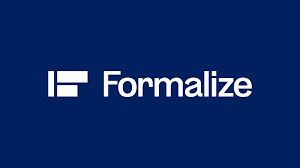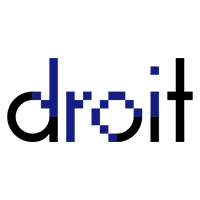From Chatbots to Credit Scoring: Europe Redefines AI Risk

Europe's new AI legislation requires companies to assess system risk, with penalties up to €30M for non-compliance by 2026.
The European Union has drawn a line in the sand. With the EU AI Act, the world’s first comprehensive AI legislation, Europe is forcing companies to reckon with a simple question: How dangerous is your algorithm? By placing AI risk at the center of its regulatory framework, the EU has fundamentally changed how businesses must approach artificial intelligence, from development through deployment.
The Act, which entered force on August 1, 2024, doesn’t treat all AI equally. A chatbot that answers customer questions faces different rules than an AI system that decides who gets a mortgage. This tiered approach categorizes applications based on their potential for harm, with escalating requirements for each level.
Understanding the Four Risk Categories in the EU AI Act
At the bottom sit minimal-risk systems, the AI-powered spam filters and video game opponents that require no special oversight. One level up, limited-risk systems like chatbots must simply disclose they’re artificial. Users deserve to know when they’re talking to a machine, not a person.
High-risk AI is where regulations bite hardest. These systems, used in hiring decisions, credit scoring, healthcare diagnostics, and law enforcement, must undergo mandatory testing, maintain detailed documentation, and include human oversight. Companies deploying them face rigorous audits and ongoing monitoring requirements.
Then there’s the top tier: unacceptable risk. Government social scoring systems? Banned. Real-time biometric surveillance in public spaces? Prohibited. The EU decided some applications are simply too dangerous for democratic societies.
EU AI Act Compliance Timeline and Penalties
The rollout follows a staggered schedule. Prohibitions on the most dangerous practices took effect immediately. General-purpose AI models like large language models now face transparency and safety requirements. By August 2026, full enforcement arrives, and the penalties are severe. Non-compliant companies face fines up to €30 million or 6% of global revenue, whichever is larger.
That threat has sparked a compliance gold rush. European companies are hiring AI ethics officers, building internal review boards, and purchasing specialized software to audit their systems.
AI Risk Management Technology Solutions
Ironically, the solution to AI regulation may be more AI. Automated auditing tools can scan system outputs for bias or errors that humans might miss. One bank using such software discovered its loan approval algorithm was inadvertently discriminating against applicants from certain postal codes, a violation they caught before regulators did.
Data governance platforms help companies document their training data, a critical requirement for high-risk systems. These platforms track data lineage, flag potential biases in datasets, and maintain the paper trail regulators demand.
Human-in-the-loop systems offer another path forward. Rather than letting AI make final decisions on loan applications or job candidates, these systems flag edge cases for human review. A credit scoring AI might approve obvious cases automatically but route borderline applications to human underwriters. This approach reduces both regulatory exposure and the likelihood of harmful errors.
Explainable AI technologies are becoming essential. When an AI system denies someone a loan, the Act requires companies to explain why. Black-box algorithms that spit out decisions without justification no longer suffice. Modern explainable AI can point to specific factors like income volatility, debt ratios, and payment history that drove each decision.
How Startups Can Navigate AI Risk Compliance
Smaller companies face a difficult calculus. A three-person startup building an AI-powered hiring tool must meet the same documentation and testing requirements as a multinational corporation. Compliance costs that represent a rounding error for Google can consume a startup’s entire budget.
But early investment in governance infrastructure can become a competitive advantage. Investors increasingly ask about AI risk during due diligence. Customers want assurances their vendors won’t become regulatory liabilities. Cloud-based governance platforms offer scalable solutions that grow with the company, making compliance achievable even for small teams.
The Global Impact of EU AI Regulations
The EU AI Act’s reach extends far beyond Europe’s borders. Any company selling AI products to European customers must comply, regardless of where they’re headquartered. A Silicon Valley startup, a Chinese tech giant, and a European scale-up all play by the same rules in the EU market.
This regulatory export mirrors what happened with GDPR, Europe’s landmark privacy law. Companies found it easier to adopt GDPR standards globally rather than maintain separate systems for different markets. The AI Act will likely follow the same pattern, establishing de facto global standards for AI safety and accountability.
Building Customer Trust Through AI Transparency
Beyond avoiding fines, proper governance builds customer trust. When a healthcare AI recommends treatment, patients want to understand its reasoning. When a hiring algorithm screens resumes, candidates deserve fairness and transparency. Companies that embrace these principles don’t just comply with regulations, they build stronger relationships with users.
In high-stakes domains like medical diagnosis or autonomous vehicles, a single catastrophic failure can destroy years of reputation building. Robust oversight and monitoring systems help companies catch problems early, before they cascade into crises.
The Future of AI Regulation in Europe
The Act will evolve as technology advances. Regulators have already signaled they’re watching generative AI closely, concerned about deepfakes, misinformation, and copyright issues. Autonomous systems, from self-driving cars to delivery robots, will likely face enhanced scrutiny as they become more prevalent.
For companies, this means governance is not a checkbox exercise but an ongoing commitment. The firms that thrive will be those that embed safety and accountability into their development processes from day one, not those that bolt on compliance measures as an afterthought.
Understanding and managing AI risk effectively has become essential for any company operating in Europe. Organizations that invest in proper oversight systems, transparency measures, and accountability frameworks will not only avoid regulatory penalties, they’ll build competitive advantages through customer trust and operational resilience.
Europe has made its bet: that the economic benefits of careful AI regulation outweigh the costs. Whether other major economies follow suit or chart different courses will shape the technology’s trajectory for decades. But for now, if you want to do AI business in Europe, you play by Europe’s rules.
The age of unregulated AI experimentation is over. The age of accountable AI has begun.







